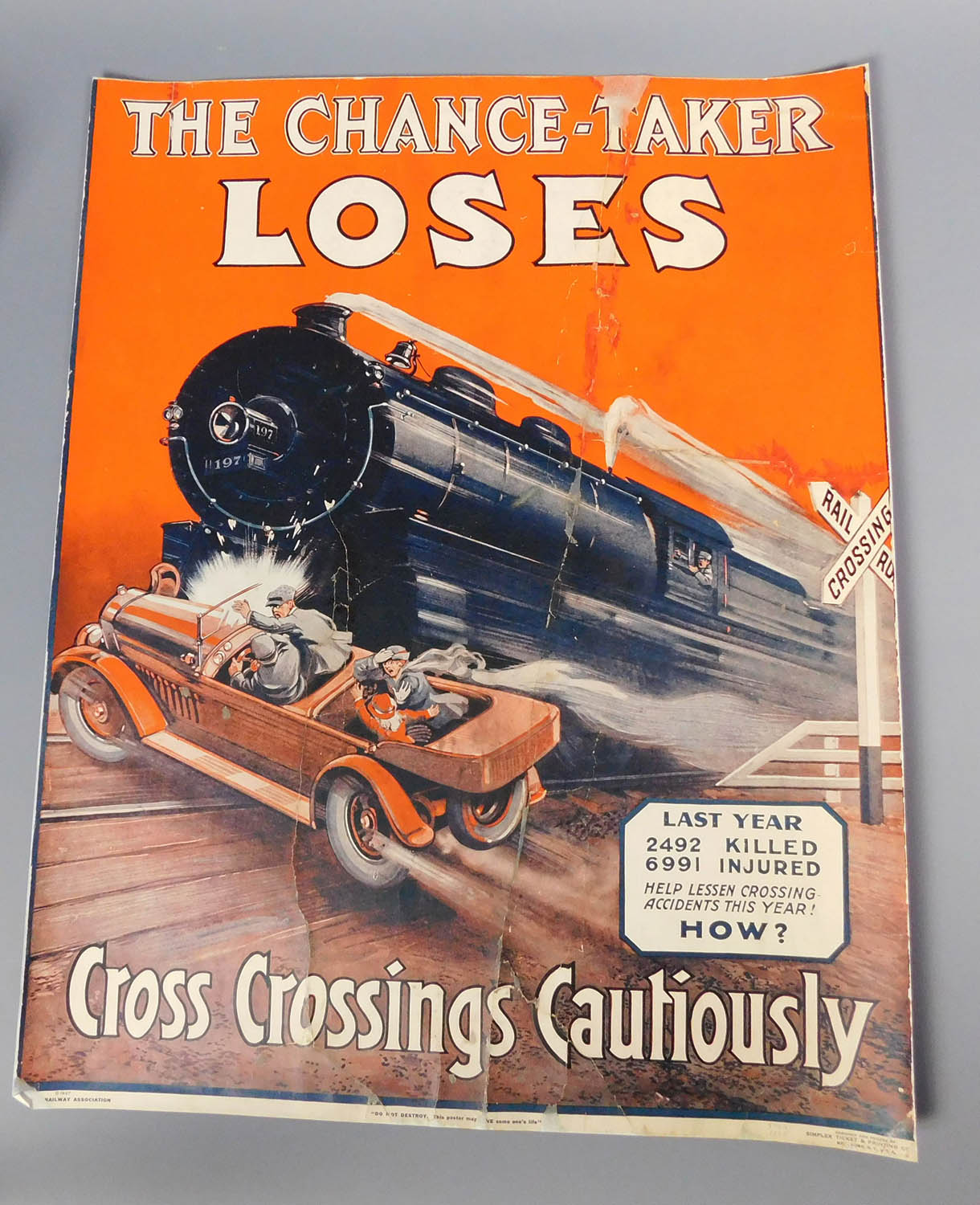Locomotives / Technology

Simplex Ticket and Printing Company
1927
This poster shows the dire consequences of trying to beat a train across the tracks. As the number of railroad tracks increased and trains ran faster, safety warning signs and signals were needed to avoid accidents. Originally, plain signs were posted at crossings, but busy crossings had a watchman that hand-operated gates. By the early 20th century, the use of “crossbuck” signs became common. The first automatic crossing signals incorporated bells mounted atop poles. These expanded to include a swinging round sign with a red light to simulate a flagman waving a red lantern (often called “Wig-Wags).” Automatic gates with alternating flashing red lights were introduced ca. 1913. U.S. railroad crossing warning signs were standardized in 1949.
Paper. L 68.5, W 53, T 0.5 cm
Steamtown National Historic Site, STEA 1305